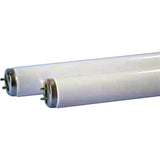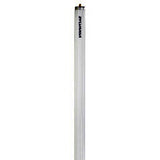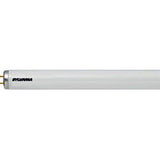SAD: A Guide to Light and Circadian Rhythms
Posted by Dave on for ProLampSales

For some people dark winter days, particularly in northern latitudes, can cause lack of motivation, lethargy, slow response and in some cases depression. The common term for this condition is SAD, seasonal affective disorder.
For owners of commercial operations with employees, this phenomenon should be taken seriously because it can not only affect the employee but also degrade work performance and productivity.
Similarly, employees of institutional and medical facilities that operate 24 hours a day can be affected by “night shift blues” which in turn will affect their work performance.
There are steps owners and managers can take to mitigate this problem. We’ll show a couple of examples after we define SAD more precisely.
Circadian Rhythms
The Lighting Research Center at Rennsellaer Polytechnic Institute, where research on light and health takes place, provides a current definition of a possible underlying cause of SAD: “Biological rhythms that repeat approximately every 24 hours are called circadian rhythms. Light is the main stimulus that helps the circadian clock, and thus circadian rhythms, keep a synchronized rhythm with the 24-hour day. If lack of synchrony or circadian disruption occurs, we may experience decrements in physiological functions, neurobehavioral performance, and sleep.”
Melatonin is the hormone in the human body that plays a major role in the wake / sleep cycle. The levels of melatonin in the body are influenced by blue spectrum light exposure to the human eye. Under normal conditions, when melatonin levels in the body are high because of minimal or no exposure to blue wavelength light, we get drowsy and eventually we sleep. When melatonin levels are low, influenced by exposure to high levels of blue spectrum light, we are awake and alert.
For some people “circadian disruptions” occur in winter when it’s still dark outside an hour or two after awakening and when the interior lighting is characterized by warm color temperatures. For night shift workers (eg. medical staff) who sleep during the daylight hours and work under electric lights at night, this same circadian disruption can occur.
Lighting Design Principles for Mitigating Circadian Disruption
The following principles can help in the selection of circadian system appropriate lighting for different types of spaces.
- Light, specifically light that features strong blue wavelengths, triggers the suppression of melatonin – a circadian stimulus.
- Daylight is the reference point for light with a significant blue wavelength component. Light from fluorescent and LED light sources with a color temperature of 5000K or higher also has a significant blue wavelength component and is usually considered a good circadian stimulus.
- The intensity, or light level, of blue spectrum dominant light is also important for circadian stimulus.
- For the most precise understanding of the blue wavelength component of a light source, the spectral power distribution, SPD curve should be evaluated.
- When considering the lighting design for a space, visual acuity parameters (the right amount of light, low glare, good color rendering, etc) may be different than the lighting requirements for optimizing the circadian clock (color temperature, light intensity). Where there is conflict, visual acuity takes priority and other strategies need to be used (see Example 1 below) to address the circadian clock.
These parameters provide general guidance. For a more precise method of determining the circadian impact of different light sources, see this excellent video series from the Lighting Research Center.
Design Strategies
The following two examples, illustrate techniques for mitigating SAD symptoms in work environments.

Example 1
The workspace for night shift hospital staff may be illuminated primarily by 3500K T8 fluorescent lights. This moderate level of blue spectrum light accompanied by a moderate intensity of light may not be enough to keep some staff feeling at peak performance.
One solution used by medical centers has been to have a break room illuminated by high intensity, 5000K or 6500K fluorescent lights. Intermittent use of this room with exposure to strong levels of blue spectrum light helps maintain melatonin suppression throughout working hours.

Example 2
With LED luminaries, the option of tunable color temperature and light intensity becomes a possibility. For assisted living type facilities this approach provides healthy living benefits for the residents. Early morning, high light level 5000K illumination for a circadian stimulus is maintained until noon, when the LED luminaries automatically move to 3500K until 6pm and finally to lower light level 3000K for the evening hours.
Designers and facility managers need to be clear about the lighting design objectives for the many types of unique spaces they encounter. With increased emphasis on healthy buildings, circadian system principles should to be considered along with traditional visual acuity lighting specifications.
Viewing this highly recommended short video series from the Lighting Research Center will provide the most comprehensive understanding of this topic as well as provide design tools for implementing solutions.
- Posted in Health
Featured Products (View All)
1 Comment




My understanding is that 6500K occurs when the sun is highest with a blue sky out. When you wake in the morning you experience something closer to 4000K. I have used a 135 watt 4000K “quantum board” for a while above my home workstation and it’s working out very well. The issue I have with 6500K is it seems harsh and clinical looking.